For general audiences and technical audiences. Due to requests, I also provide some conference poster templates.
General
 |
Class on representation in computer graphics (for high school) Hijung Valentina Shin, Adriana Shulz, and I taught a 2-hour course at MIT Splash 2015. Our goal was to give students a very tangible intuition behind 2D and 3D modeling and different methods of representation, including voxels, meshes, CSG, height fields, and procedural modeling. We discussed the attributes and trade-offs of different representations (including accuracy, efficiency, and usability), and the different applications in which they are used. |
 |
Reference guide for how to improve research posters A set of reference slides I created for the MIT 6.UAR course: "Preparation for Undergraduate Research" (Fall 2015). These slides provide tips for improving research posters, with a unique set of student examples of various poster elements before/after improvements. |
 |
Recap of 2015 Google I/O conference This year, I kept up-to-date with Google I/O virtually, but in the same city. I picked out my favorite moments (via video screenshots, paraphrased quotes, and related visual content) from the keynote speech and a set of posted session videos. I augmented these slides with little research hints (like: "this area's going to be pretty big soon, get on it"). |
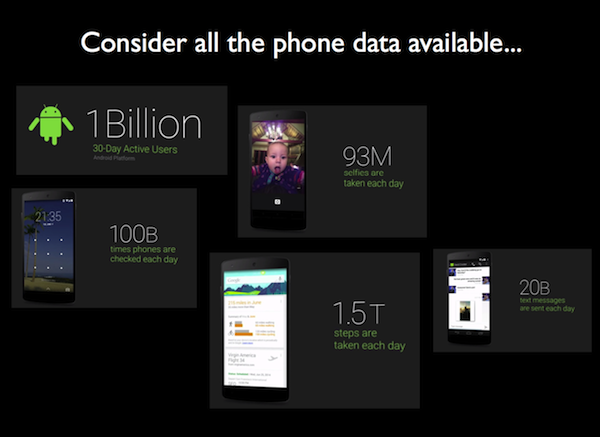 |
Recap of 2014 Google I/O conference Google flew me and 14 other alumni Anita Borg Scholars to attend this conference and put together a Global committee to increase diversity in computer science. I/O was a blast! The days were packed with information, cool tech, and after-hours networking galore. I presented this slide deck back at MIT for the computer vision group, to initiate a conversation about the emerging tech tools, what we might expect from the future, and the research directions that may prove to be fruitful. |
 |
Discussion about future of technology (for high school) This presentation was prepared for a local high-school class that visited MIT as part of their curriculum unit on smart technology in the context of the social future (they were also reading "Fahrenheit 451" at the time). This presentation was meant to initiate discussion as a class about the cool benefits, but also potential (social and intellectual) issues, with technology. For full effect, we finished the day with a tour around MIT's awesome labs. |
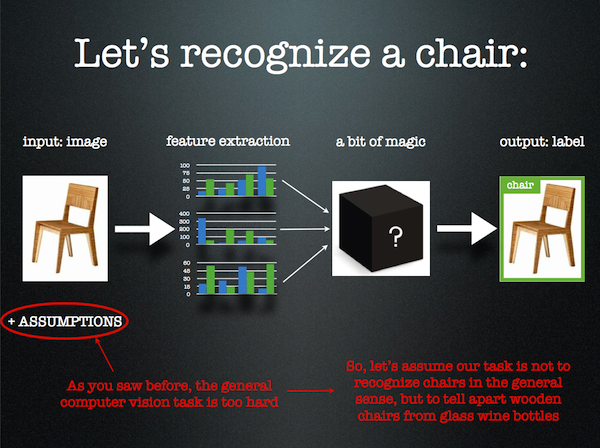 |
20 min intro to computer vision (for high school) I gave this presentation two years in a row for MIT's WTP program for gifted high-school girls. The goal of this presentation was to provide a really high-level overview of the types of problems we think about in computer vision, why they are hard, and how we could work towards algorithmic solutions. |
 |
My list of non-fiction book recommendations Some popular science, history of science, economics, psychology, philosophy, biology and other books I've enjoyed, read cover-to-cover, and can recommend. If it's not your field, you can learn a lot in a light, easy-to-digest, on-the-train-to-work manner. If it is your field, you pick up some great selling points and high-level pictures. I've found that reading about a broad range of topics really faciliates conceptual connections across fields. Also attached is a list of textbooks I've used. |
Technical
|
Where do people look on data visualizations? A presentation I prepared for the VSS 2018 Symposium on: Vision and Visualization: Inspiring Novel Research Directions in Vision Science. This was a 20-minute overview of the work we had done on the topic of attention on information visualizations. Where do people look on visualizations? What is the relationship between where they look and what they remember? How can we capture attention more effectively? Once we have enough data, how can it be used to train computational models and inform applications for visualizations? |
|
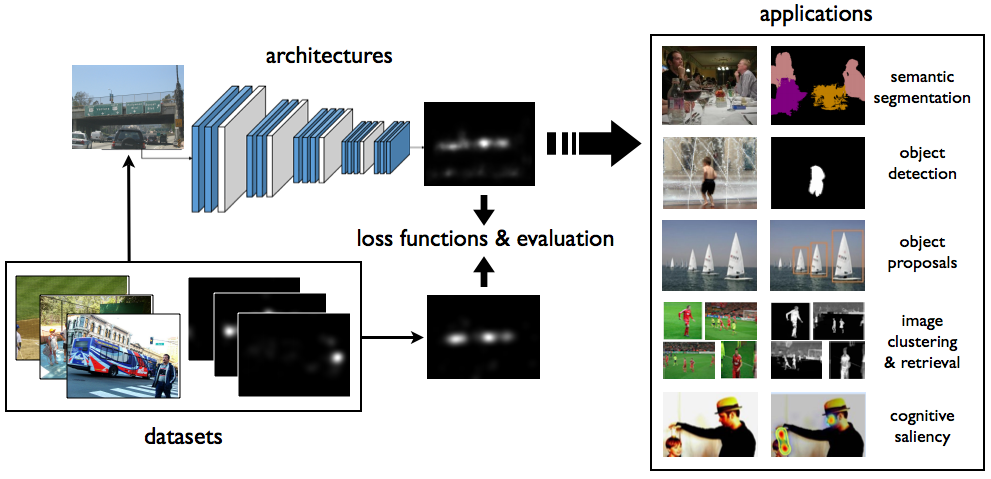 |
Towards Cognitive Saliency A presentation I gave at the ECCV 2016 tutorial on "New directions in saliency research: developments in architectures, datasets, and evaluation". Here I claim that saliency modeling is becoming more cognitive, and that building predictive models of human gaze can tell us a lot about how humans process images. I explore what aspects of human gaze patterns are still difficult to model, and what kind of applications might be possible. |
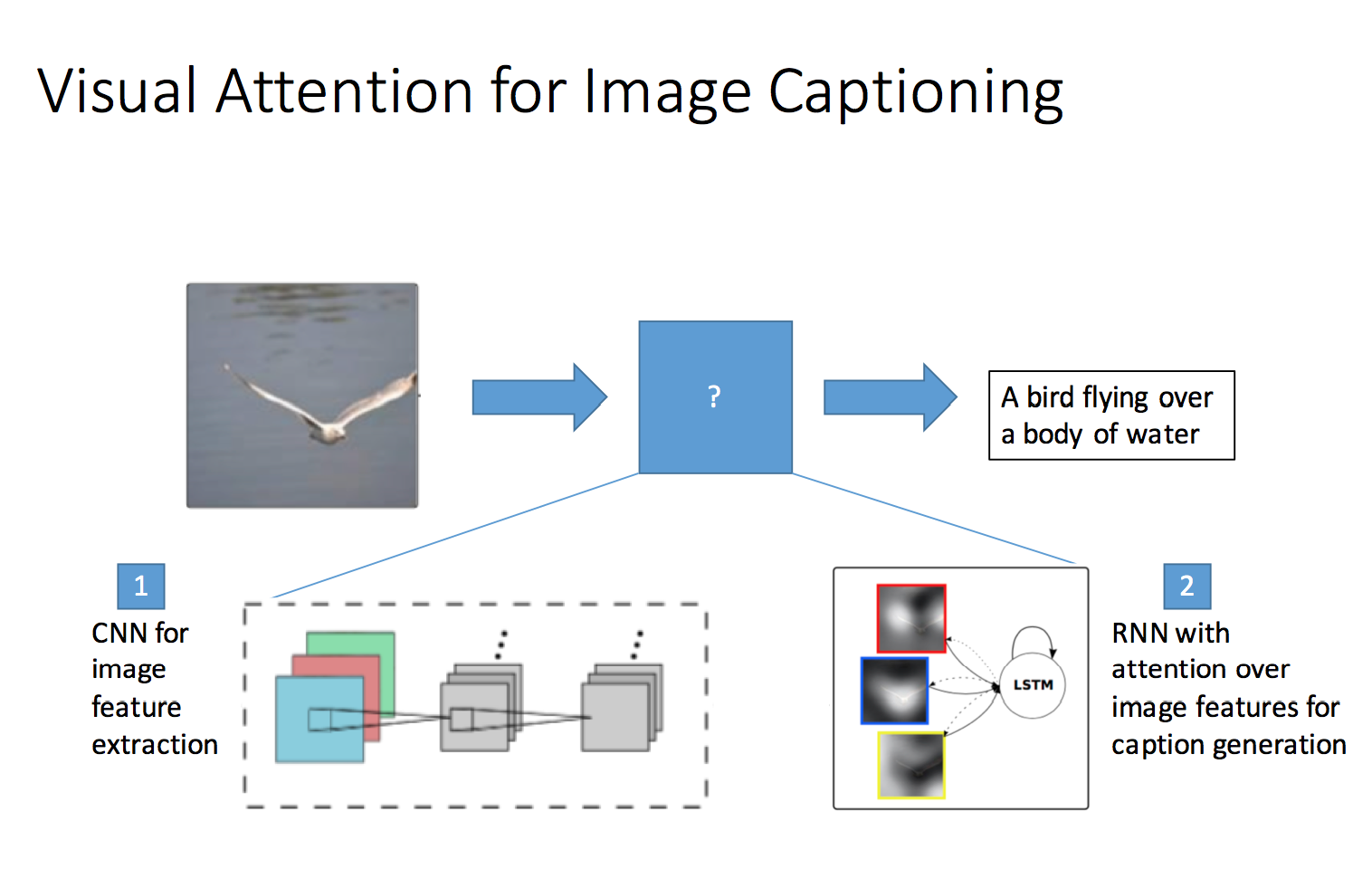 |
Visual attention, with and for, neural nets A set of slides I created for a weekly machine learning and vision reading group meeting. These slides review a number of relatively recent papers related to visual attention and neural nets. I include two papers that use visual attention for image captioning and question answering, respectively. Then I review a separate line of work aimed at modeling human visual attention (via predicting eye movements) as the end goal. The discussion that ensued during the reading group revolved around how human visual attention can be used to bootstrap tasks related to scene understanding. |
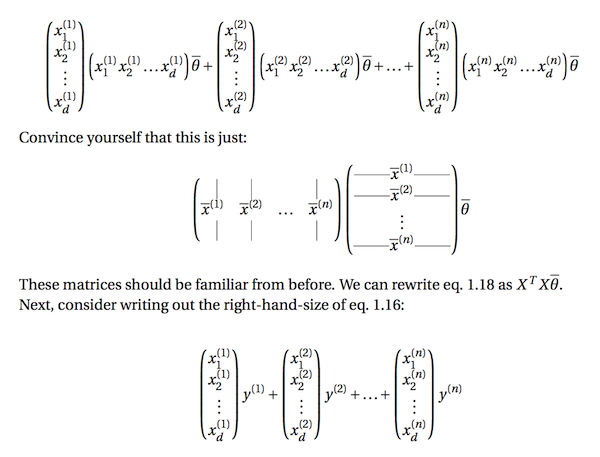 |
Generalized linear regression derivations A set of notes prepared for the MIT 6.036 course: "Intro to Machine Learning" (Spring 2015). These were concepts I covered during recitation (tutorial) when I was a TA for this course. These notes go into very thorough derivations of the generalized linear regression formulation, demonstrating how to write it out in matrix form. |
 |
Some basics of SVM These notes were prepared as personal study notes (Summer 2012). These notes contain some derivations, details, and explanations that not many SVM tutorials usually delve into. Thus, they're meant to augment primary course material (textbook or lecture notes) on SVMs and to help digest the course material. |
 |
Test review of some machine learning concepts A set of notes prepared for the MIT 6.036 course: "Intro to Machine Learning" (Spring 2015). These were concepts I covered during an exam review session when I was a TA for this course. They were designed to bridge some of the concepts students learned in the first half of the course, and to think about some of the connections between different machine learning formulations. |
 |
Reading group presentation on SVM+ Presented based on the paper: V. Vapnik and A. Vashist, "A new learning paradigm: Learning using privileged information", Neural Networks, 2009. I presented this at the MIT computer vision reading group (Fall 2012). The point of this presentation was to clarify the parallels between SVM and SVM+, by carefully taking apart the formulation. |
 |
Presentation on visual attention Presented based on the book: J. K. Tsotsos, "A computational perspective on visual attention", MIT Press 2011. I presented this at the University of Toronto lab group meeting (Summer 2012). This presentation was meant to give some background and motivation about visual attention modeling, and some of the computational problems that models must handle. |
 |
Paper presentation on saliency models Presented based on the paper: K. Koehler, F. Guo, S. Zhang, M. P. Eckstein. "What do saliency models predict?" JoV, 2014. I presented this during an MIT seminar course on computational visual attention taught by J.K. Tsotsos (Spring 2014). All the main results of the paper are reported, but broken down one clean result at a time for easier digestion. |
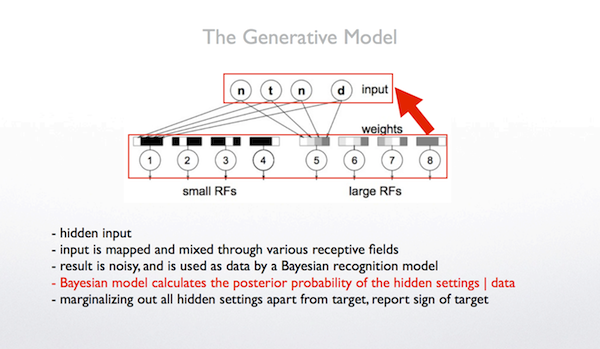 |
Paper presentation on attentional load Presented based on the paper: P. Dayan. "Load and Attentional Bayes" NIPS, 2008. I presented this during an MIT seminar course on computational visual attention taught by J.K. Tsotsos (Spring 2014). This presenation is meant to explain the experiments described in this paper, and put them in the context of related work. |
 |
Paper presentation on part and appearance sharing Presented based on the paper: L. Zhu, Y. Chen, A. Torralba, W. Freeman, A. Yuille "Part and Appearance Sharing: Recursive Compositional Models for Multi-View Multi-Object Detection", CVPR 2010. I presented this at the University of Toronto computer vision reading group meeting (Summer 2012). This presentation slowly worked through and clarified the formulations presented in this paper. |
 |
A bit about quantum computation A paper written for the University of Toronto CSC463 class on Complexity and Computability (Spring 2012). Discusses quantum computing in the context of Turing Machines and Classical Computation. |
Templates
Because starting a poster from scratch is sometimes painful, I provide some templates that I've previously created for my own posters.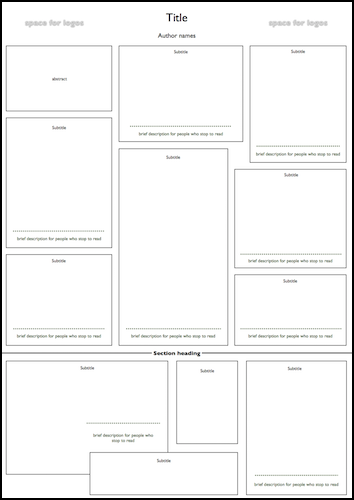 |
Two A0 portrait poster templates from ECCV 2016 in powerpoint (ppt) or keynote (key) formats. Like here. |
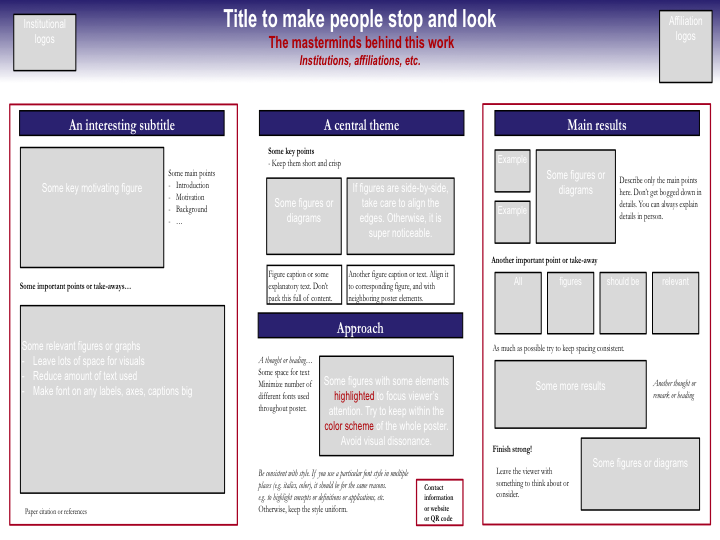 |
A 48x24 inch academic poster template in powerpoint (ppt) format with poster design hints. |
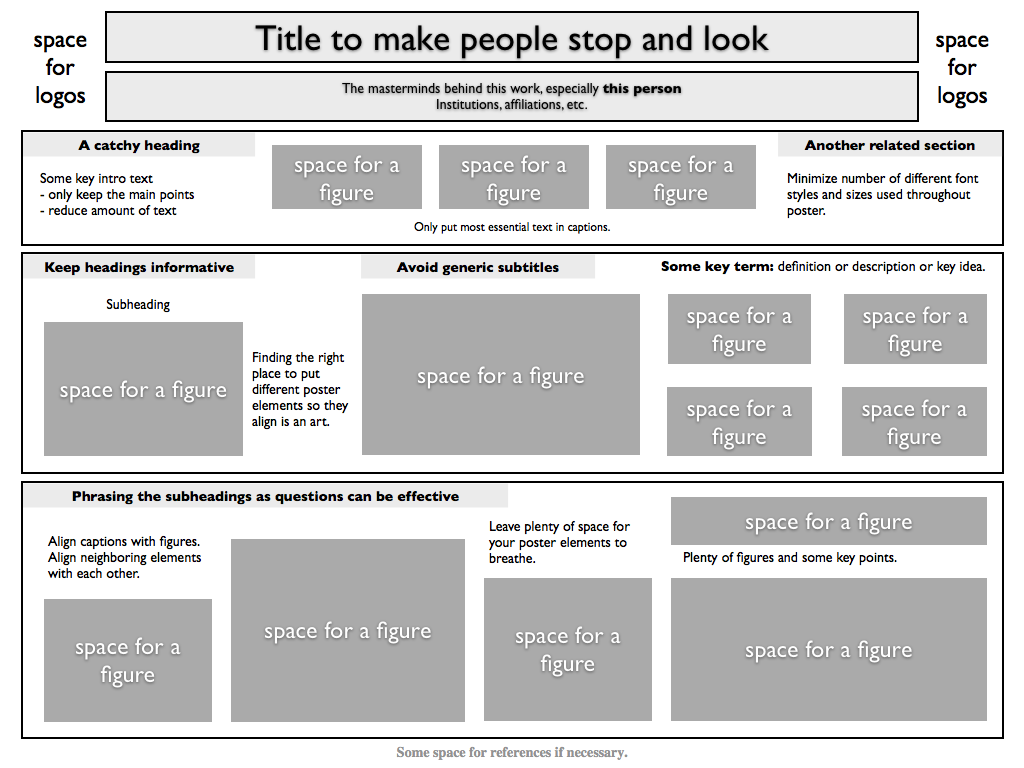 |
A lettersize poster template in powerpoint (ppt) or keynote (key) formats. I used it in this poster. A related lettersize poster template (with different arrangement of elements) in powerpoint (ppt) or keynote (key) formats. I used it in this poster. |
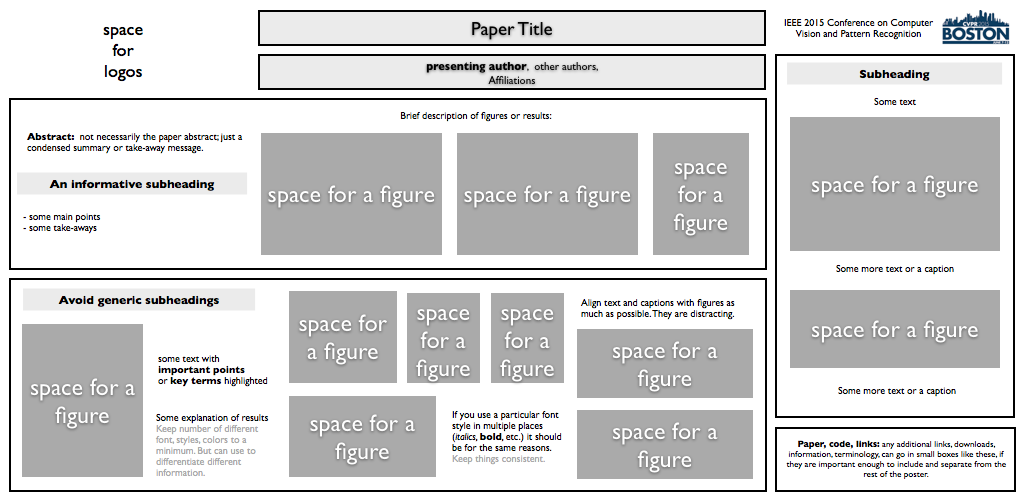 |
Two 1024x501 poster templates of CVPR size in powerpoint (ppt) or keynote (key) formats. Like here and here. |
More to come...